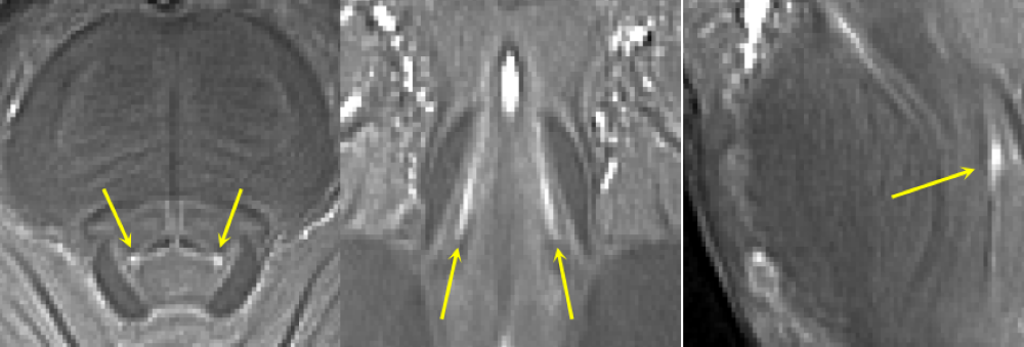
Ultra-powerful brain scanners could offer hope for the treatment of previously-untreatable symptoms in Parkinson’s disease, a new study suggests.
Both Parkinson’s disease and a related disorder, progressive supranuclear palsy (PSP), are progressive brain diseases that not only affect movement but also damage motivation and cognition.
Cognition refers to the mental processes that take place in the brain, including thinking, attention, language, learning, memory and perception.
These symptoms can have a major impact on a patient’s outcome, affecting survival and general wellbeing, as well as the stress and costs for families.
The ultra-powerful 7T scanner may help us identify those patients who we think will benefit the most
To understand the causes of these cognitive symptoms, researchers at the University of Cambridge used a new ultra-high strength “7T” MRI scanner at the Wolfson Brain Imaging Centre.
They measured changes in the brains of people with Parkinson’s disease, PSP, or who were in good health.
The 7T refers to the strength of the magnetic field – most MRI scanners tend to be 3T or below.
Patients with Parkinson’s and PSP are often treated with drugs such as L-DOPA, which compensate for the severe loss of dopamine – a brain chemical that influences mood and feelings of reward and motivation.
But dopamine treatment does little for many of the non-motor symptoms, and scientists have started to look at noradrenaline, a chemical that plays a critical role in brain functions, including attention and arousal, thinking and motivation.
Professor James Rowe from the Department of Clinical Neurosciences at the University of Cambridge, who led the study, said: “Noradrenaline is very important for brain function.
“All of our brain’s supply comes from a tiny region at the back of the brain called the locus coeruleus, which means ‘the blue spot’.
“It’s a bit like two short sticks of spaghetti half an inch long: it’s thin, it’s small, and it’s tucked away at the very base of the brain in the brain stem.”
Researchers wanted to know how they could examine this tiny region of the brain, as previous MRI scanners have not been powerful enough.
While most scanners can show structures at the level of detail of a grain of rice, 7T scanners, which have ultra-strong magnetic fields, can provide resolution at the size of a grain of sand.
This allowed the team to examine the locus coeruleus of patients and confirm that the greater the level of damage to this region, the more severe their symptoms of apathy and the worse they performed at cognitive tests.
Researchers suggest the findings offer the hope of new treatments for these symptoms.
A number of drugs that boost noradrenaline have already been through clinical trials for other conditions and have been shown to be safe and well tolerated, the experts say.
Professor Rowe and colleagues are now leading a clinical trial at Cambridge University Hospitals NHS Foundation Trust to see if these drugs alleviate symptoms in PSP.
Dr Rong Ye from the Department of Clinical Neurosciences at the University of Cambridge, the study’s joint first author, said: “Not every PSP or Parkinson’s patient is going to benefit from noradrenaline-boosting drugs.
“They’re more likely to benefit those people with damage to their locus coeruleus – and the greater the damage, the more benefit they’re likely to see.
“The ultra-powerful 7T scanner may help us identify those patients who we think will benefit the most.
“This will be important for the success of the clinical trial and, if the drugs are effective, will mean we know which patients to give the treatment to.
“In the long term, this will prove more cost-effective than giving noradrenaline boosters to patients who ultimately would see no benefit.”
The research was supported by Parkinson’s UK, the Cambridge Centre for Parkinson-Plus, and others across the world.
It is published in the journal Movement Disorders.







